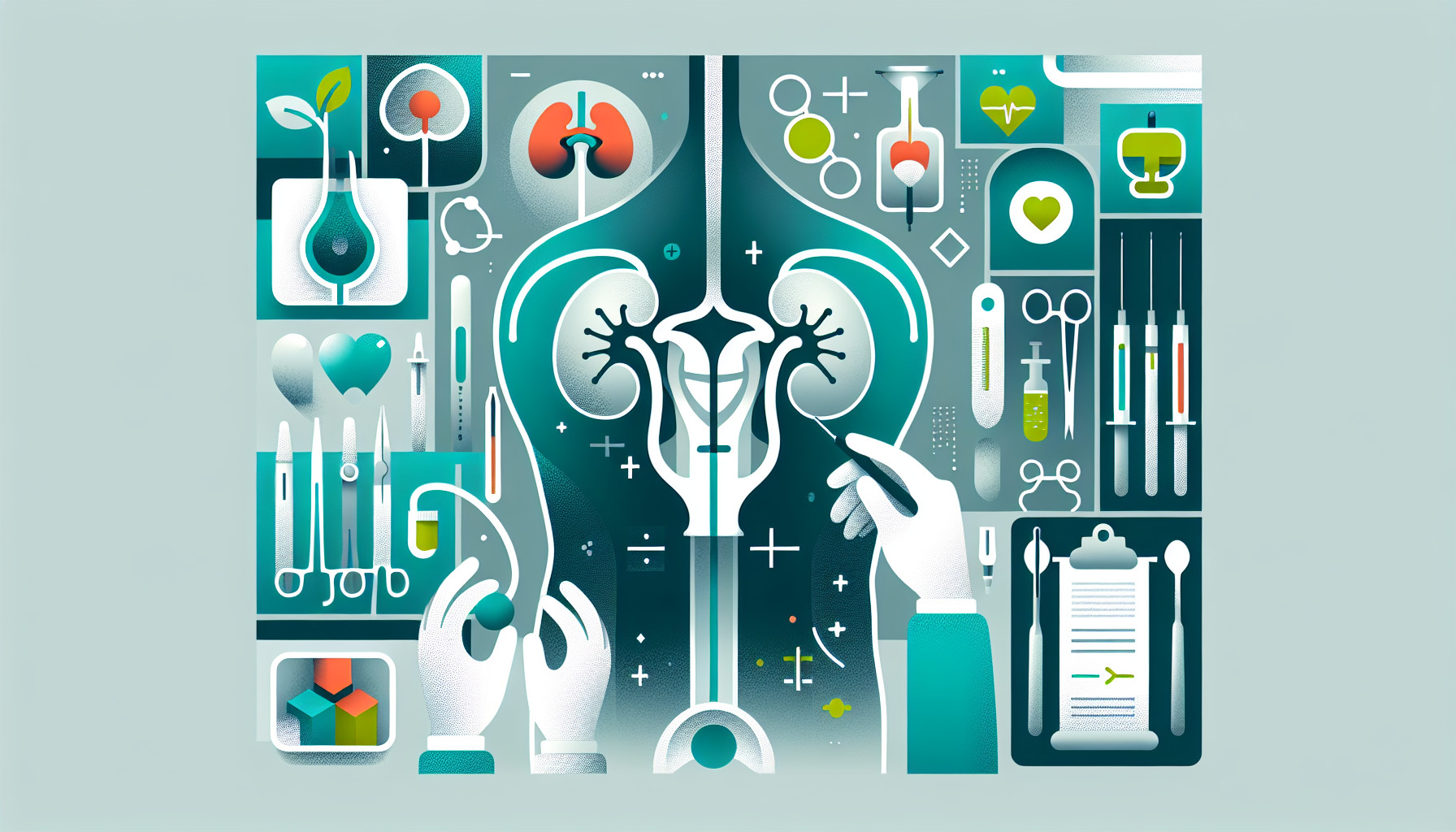Our Summary
This research paper describes a new method of performing a surgical procedure called ureterostomy on children with urinary tract anomalies. In this procedure, the ureter (the duct that carries urine from the kidney to the bladder) is rerouted to the surface of the body, allowing urine to be drained directly from the kidney.
Traditionally, this operation is done using open surgery. However, this study discusses an alternative approach using laparoscopy, a minimally invasive surgical technique that involves small incisions and the use of a camera.
The study involved 19 patients who required the procedure for different urinary conditions. On average, the operation took 40 minutes, and patients were given antibiotics and discharged within 72 hours. Three months after surgery, the patients were reviewed, and it was found that their conditions were stable, and they did not have any urinary tract infections.
The authors conclude that this laparoscopy-assisted method is quick, easy, and safe for even the smallest of babies. It also ensures prompt drainage of urine. The early results of using this approach are promising, with potential benefits over the traditional open surgery method.
FAQs
- What is the new method of performing a ureterostomy as described in this research?
- How does the laparoscopy-assisted method of ureterostomy compare to the traditional open surgery method?
- What were the findings of the study involving 19 patients who underwent the laparoscopy-assisted ureterostomy?
Doctor’s Tip
One helpful tip a doctor might give a patient about ureterostomy is to follow post-operative care instructions carefully to prevent any complications and promote healing. This may include taking prescribed medications, keeping the incision site clean and dry, and monitoring for signs of infection. It is also important to attend follow-up appointments to ensure proper healing and address any concerns that may arise.
Suitable For
Patients who may be recommended for a ureterostomy procedure include:
- Patients with urinary tract anomalies such as ureteral strictures, obstructions, or anomalies that prevent normal urine flow from the kidney to the bladder.
- Patients with a history of recurrent urinary tract infections or kidney damage due to blockages in the urinary system.
- Patients with bladder exstrophy or other congenital anomalies that affect the normal function of the urinary system.
- Patients who are not candidates for other surgical procedures to correct their urinary condition.
- Patients who require a temporary or permanent diversion of urine from the kidney due to medical reasons.
Timeline
Before the ureterostomy procedure:
- Patient undergoes evaluation and diagnosis of urinary tract anomalies.
- Patient may undergo imaging tests such as ultrasound or CT scans to assess the condition of the urinary system.
- Surgical consultation is scheduled to discuss the ureterostomy procedure and its potential benefits and risks.
After the ureterostomy procedure:
- Patient undergoes laparoscopy-assisted ureterostomy procedure, which takes approximately 40 minutes.
- Patient is given antibiotics post-operatively to prevent infection.
- Patient is discharged within 72 hours after surgery.
- Three months post-surgery, patient is reviewed to assess the stability of their condition and to check for any urinary tract infections.
- Early results show that the laparoscopy-assisted method is quick, easy, and safe, with potential benefits over traditional open surgery.
What to Ask Your Doctor
- What is ureterostomy, and why is it necessary for my condition?
- What are the potential risks and complications associated with the traditional open surgery method of ureterostomy?
- How does the laparoscopy-assisted method of ureterostomy differ from the traditional open surgery method?
- What are the benefits of using laparoscopy for ureterostomy in terms of recovery time and post-operative care?
- How long will I need to stay in the hospital after the laparoscopy-assisted ureterostomy procedure?
- How soon can I expect to see improvements in my condition after the laparoscopy-assisted ureterostomy?
- Will I need any additional follow-up appointments or tests after the procedure, and if so, what will they involve?
- Are there any specific lifestyle changes or precautions I should take after undergoing the laparoscopy-assisted ureterostomy?
- Are there any restrictions on physical activity or diet that I should be aware of following the procedure?
- Are there any potential long-term effects or considerations I should keep in mind regarding the laparoscopy-assisted ureterostomy procedure?
Reference
Authors: Asimakidou M, De Win G, Cherian A. Journal: J Pediatr Urol. 2019 Aug;15(4):423-424. doi: 10.1016/j.jpurol.2019.05.013. Epub 2019 May 21. PMID: 31221599
